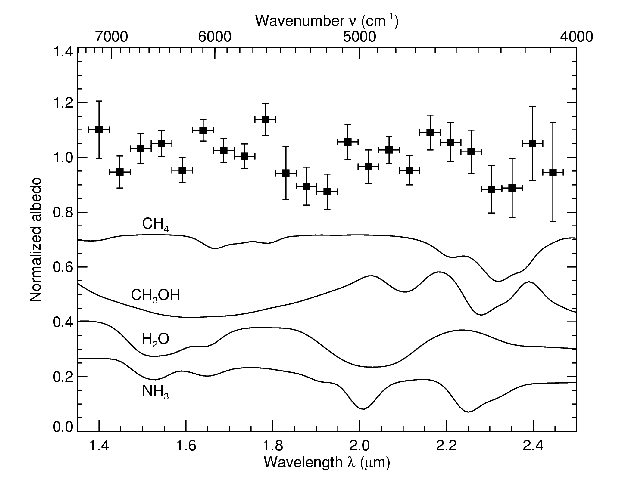
Near-Infrared Spectrum of Low-Inclination Classical Kuiper Belt Object (79360) 1997 CS29
Published in 2005: Astron. J. 130, 1299-1301.
W.M. Grundy(1,2), M.W. Buie(1,2), and J.R. Spencer(3)
(1) Lowell Observatory, Flagstaff AZ.
(2) Visiting observer at W.M. Keck Observatory.
(3) Southwest Research Institute, Boulder CO.
Abstract
The "Cold Classical" Kuiper Belt is the only part of the Kuiper Belt where objects show distinct color statistics from the rest of the trans-neptunian population. Cold Classical orbits are also likely to have been among the least dynamically perturbed since the time of accretion. As such, Cold Classical objects are especially interesting targets for compositional investigation by means of near-infrared spectroscopy. In this paper we report the first published infrared spectrum of a likely member of this unique class of objects. A 1.4 to 2.5 micron spectrum of the Cold Classical candidate object (79360) 1997 CS29 obtained at Keck 1 is spectrally featureless.
Figure 1

Fig. 1. Normalized albedo spectrum of the "Cold Classical" Kuiper Belt Object (79360) 1997 CS29 obtained with NIRC at Keck 1, compared with absorption spectra of four ices, convolved to the same spectral resolution and offset downward for clarity. Statistically significant absorption bands are not apparent in the CCKBO spectrum. The four ice spectra are simple Hapke (1993) models based on spectral data from Grundy et al. (2002), Cruikshank et al. (1998), Grundy and Schmitt (1998), and Sill et al. (1980), for CH4, CH3OH, H2O, and NH3, respectively.